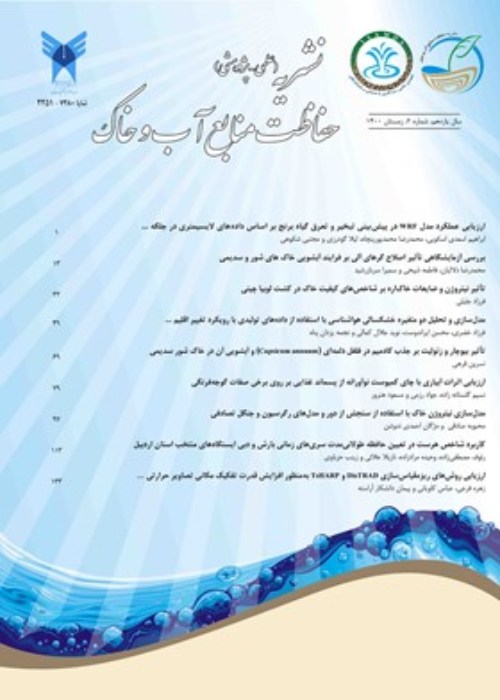Application of Hybrid Model of Artificial Neural Networks and Firefly Algorithm to Predict the Amount of TDS in River Water
Estimation and forecasting of qualitative parameters along with quantitative parameters of water alongside the river to make correct managerial decisions is one of the objectives of managers and planners of the water industry should be accurately simulated. Most of the models for qualitative parameter estimations require very large input parameters that are either difficult to access or require much time and money to determine. Therefore, the use of data-driven models in this field has been developed to save time and money.
In this paper, the application of artificial neural networks and its combination with the firefly algorithm to predict the amount of Total dissolved solids (TDS) of water in the Gavehrood River located in Iran, Kermanshah has been trained and validated. with this purpose, water quality data of hydrometric station upstream of the Gavoshan reservoir dam are used for the statistical period (1991-2010). Based on different inputs, the multilayer perceptron (MLP) artificial neural network and its combination with the firefly algorithm are tested. The best algorithm of the inputs, the number of hidden layers and the number of neurons in each layer in the artificial neural network are determined. The input data imported to the models include the flow rate (Q), Sodium (Na), Magnesium (Mg), Calcium (Ca), Sulfate (So4), Chloride (Cl), Bicarbonate (Ho3), Electrical conductivity (EC) and Total Dissolved Solides of the river in the previous period (TDSt-1) and the output data of TDS. The number of hidden layers is obtained to be 1 and the number of hidden layer neurons is achieved to be 9. Also, the neural network function in this study is considered as a waterfall type and the results are compared by combining artificial neural networks with the firefly algorithm. The model outputs are compared with measurement data using the error measurement criteria.
In this regard, the values of the used error evaluation indices including the observed standard deviation (RSR), Nash Sutcliffe coefficient (NSC), correlation coefficient (R) and root mean square error (MSE) for artificial neural network are yielded 0.154, 0.976, 0.989 and 25.27, respectively and in the case of the neural network combination with the firefly algorithm, are achieved to be 0.129, 0.983, 0.992 and 17.8, respectively.
Therefore, the performance of the hybrid method of artificial neural networks by using the firefly algorithm in predicting TDS is more appropriate than artificial neural networks.
- حق عضویت دریافتی صرف حمایت از نشریات عضو و نگهداری، تکمیل و توسعه مگیران میشود.
- پرداخت حق اشتراک و دانلود مقالات اجازه بازنشر آن در سایر رسانههای چاپی و دیجیتال را به کاربر نمیدهد.


